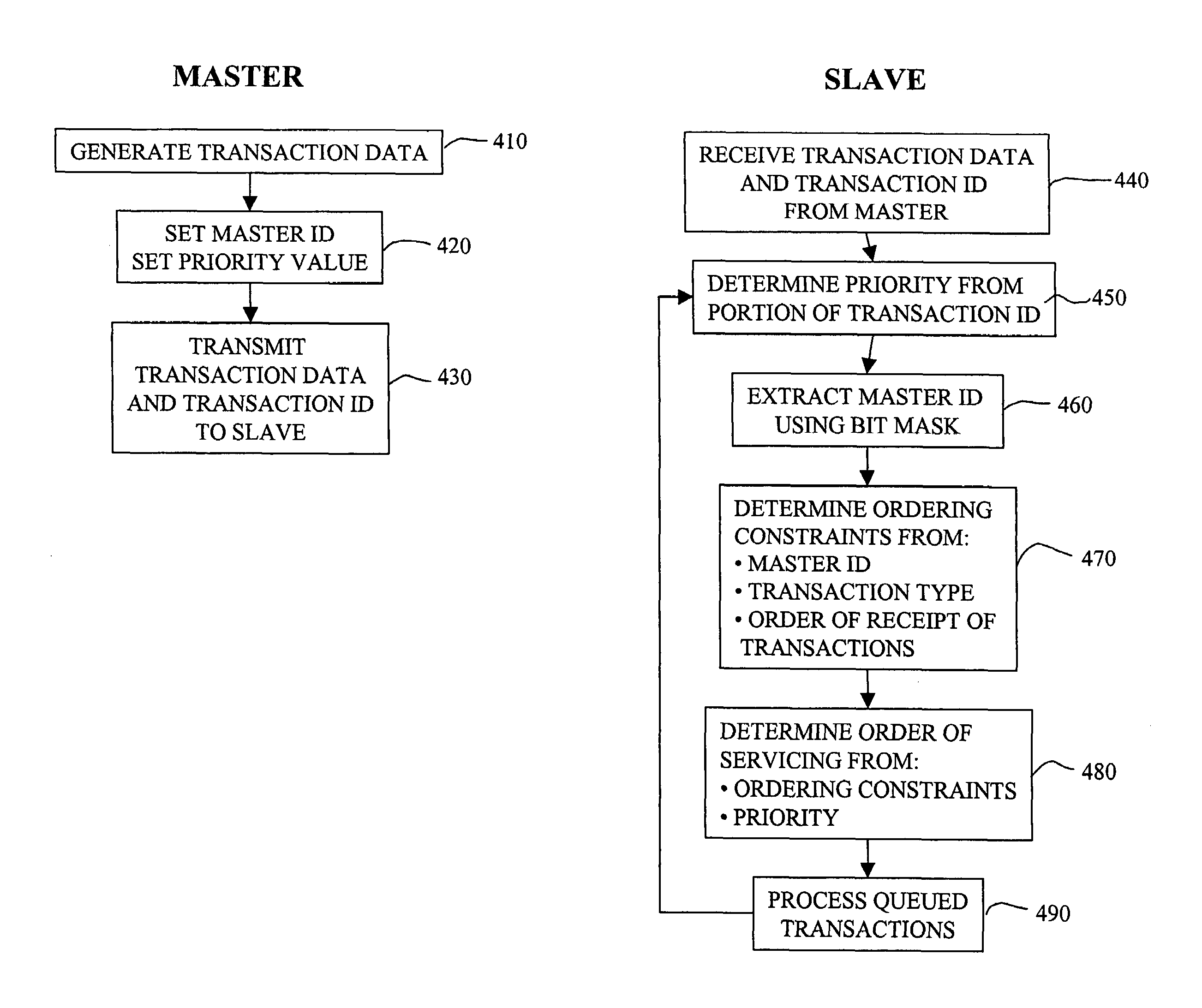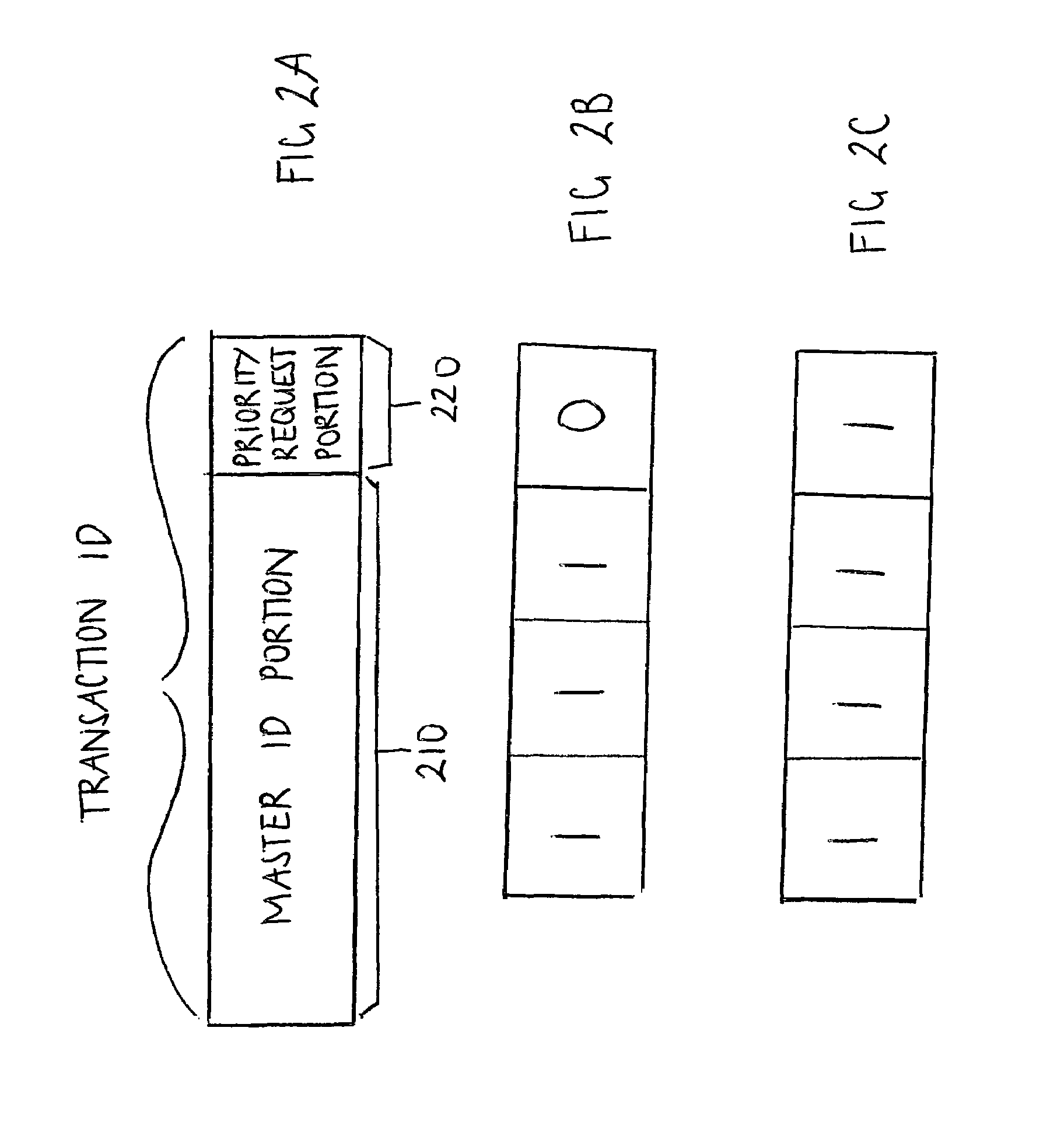Transaction request servicing mechanism
a technology of communication bus and service mechanism, which is applied in the direction of transmission, electric digital data processing, instruments, etc., can solve the problems of problematic addition of extra side-band signals to known bus protocols to accommodate priority information, and achieve the effects of facilitating backward compatibility, promoting early service of high priority requests, and enhancing system performan
- Summary
- Abstract
- Description
- Claims
- Application Information
AI Technical Summary
Benefits of technology
Problems solved by technology
Method used
Image
Examples
Embodiment Construction
[0034]FIG. 1 schematically illustrates a data processing system. The system comprises three slave devices 110, 120, 130 and four master devices 150, 160, 170, 180. The master devices are a central processing unit 150, a direct memory access (DMA) controller 160, a liquid crystal display (LCD) controller 170 and a video accelerator 180. The slave devices are memory controllers having attached memory. A communication bus 140 provides a data communication path between master and slave devices. The bus 140 uses the AMBA™ AXI protocol as developed by ARM Limited, Cambridge, England to mediate interconnection and management of the master and slave devices of the system. The AXI version of AMBA™ is a burst-based protocol suitable for high-performance, high-frequency system designs. Key features of the AMBA™ AXI protocol include separate address / control and data phases and support for out-of-order transaction completion.
[0035]The master devices 150, 160, 170, 180 generate transaction reques...
PUM
 Login to View More
Login to View More Abstract
Description
Claims
Application Information
 Login to View More
Login to View More - R&D
- Intellectual Property
- Life Sciences
- Materials
- Tech Scout
- Unparalleled Data Quality
- Higher Quality Content
- 60% Fewer Hallucinations
Browse by: Latest US Patents, China's latest patents, Technical Efficacy Thesaurus, Application Domain, Technology Topic, Popular Technical Reports.
© 2025 PatSnap. All rights reserved.Legal|Privacy policy|Modern Slavery Act Transparency Statement|Sitemap|About US| Contact US: help@patsnap.com



